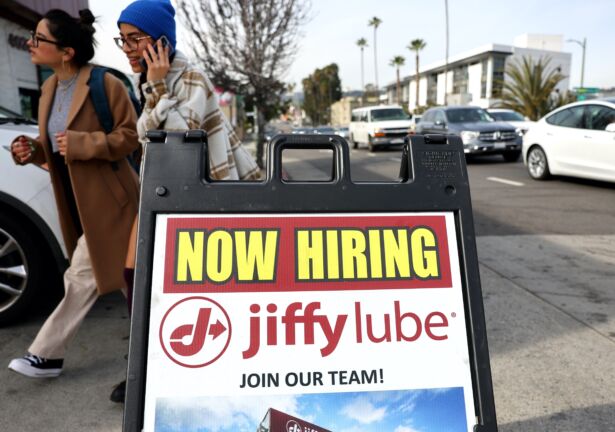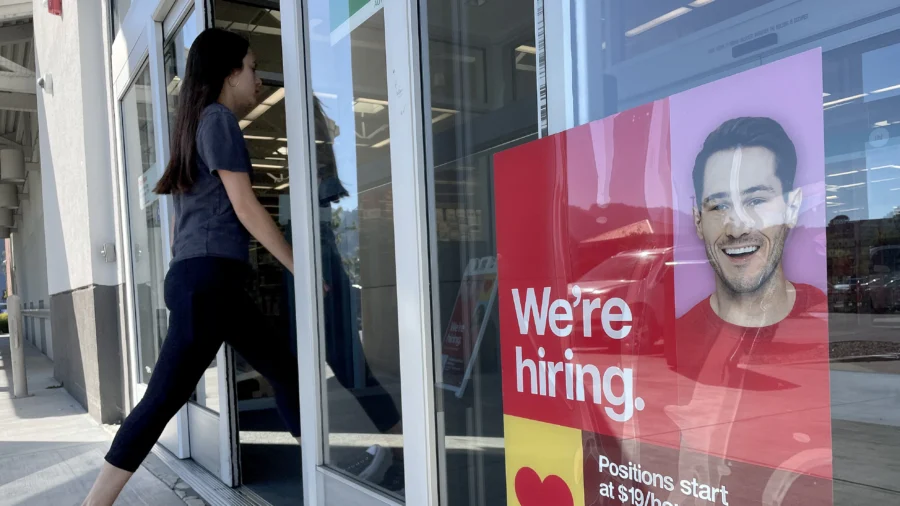The U.S. economy created 199,000 new jobs in November, topping economists’ expectations and showing continued resilience in the home stretch of 2024. This was up from 150,000 in October.
According to the Bureau of Labor Statistics (BLS), the unemployment rate dropped to 3.7 percent last month, down from 3.9 percent and better than the consensus estimate.
Average hourly earnings rose to 4 percent year-over-year and jumped 0.4 percent monthly. Average weekly hours edged up to a higher-than-expected 34.4, up from 34.3. The labor force participation rate increased to 62.8 percent, up from 62.7 percent.
The employment gains were concentrated in a handful of sectors, including healthcare (77,000), government (49,000), leisure and hospitality (40,000), and manufacturing (28,000).
The retail sector lost 38,000 positions, while transportation and warehousing shed 5,000 jobs.
In November, the number of people employed part-time for economic reasons slumped by 295,000 to 4 million. The number of individuals not in the labor force who presently want a job was little changed at 5.3 million. The number of workers employed at two or more jobs was flat at 8.341 million.
Revisions were prevalent in the monthly jobs report. In September, the change in payroll levels was adjusted down by 35,000 to 262,000.
Market Reaction
The financial markets reacted negatively to the data, with the leading benchmark indexes in the red in pre-market trading on concerns that the Federal Reserve could maintain the mantra of higher interest rates for longer to cool down the labor market.
U.S. Treasury yields ballooned across the board. The benchmark 10-year yield added about 10 basis points to nearly 4.23 percent. The 2-year yield added close to 9 basis points to 4.67 percent, while the 30-year bond picked up 9 basis points to top 4.33 percent.
The U.S. Dollar Index (DXY), a gauge of the data, popped on the news, rallying as much as 0.6 percent to above 104.00.
The higher-than-expected employment will continue to fight inflation “as open positions get filled,” says Bryce Doty, the senior vice president at Sit Invest.
“However, the knee-jerk reaction is for higher yields out of fear that the Fed may do an about-face hint about raising rates again. More labor supply reduces the cost of labor which is keeping wage growth at a tame 4%. Given a 2% growth rate in productivity, companies only need to raise prices 2% to cover increased wages,” he said in a note. “Solid job increases combined with wages growing faster than CPI also helps the soft landing scenario.”
But while the consensus on Wall Street is that this was a terrific jobs report, Isaac Lopez, the communications director at RedBalloon, says that “government spending is the star of this month’s jobs report.”
“Otherwise, the job market would be in recession. Small businesses have been feeling this economic pain for several months,” he said in a statement to The Epoch Times.
Biden: More Work to Do
President Joe Biden celebrated the latest jobs data, saying in a White House statement that “we have achieved better growth and lower inflation than any other advanced country” on his watch.
“A year ago, forecasters said it couldn’t be done,” he said.
But President Biden insists that he is doing more to lower costs for the American people because “prices are still too high for too many Americans.”
“I’m doing everything in my power to bring down prescription drug costs, health insurance premiums, and utility bills. I’m fighting to eliminate junk fees that some banks, airlines, and other companies use to rip off consumers,” President Biden said on Dec. 8. “And now that our actions have rebuilt supply chains and brought down costs, I’m calling on large corporations to pass along the savings to consumers.”
President Biden also took a shot at Republicans, accusing them of “fighting to lower taxes for the wealthiest Americans” and trying to cut Medicare and Social Security.
“That’s just wrong,” he said.
Elsewhere in the Labor Market
Heading into the monthly jobs report, investors combed through the latest labor-related data.
The BLS’s Job Openings and Labor Turnover Summary (JOLTS) figures showed that the number of job openings plunged by 617,000 in October to 8.733 million, the lowest reading since March 2021 and below the consensus estimate of 9.3 million.
Employment opportunities fell in multiple industries, including health care and social assistance (negative 236,000), finance and insurance (negative 168,000), and real estate and rental and leasing (negative 9,000). The drop in job openings was also seen in much of the country, led by the South and Midwest, with negative 289,000 and negative 193,000, respectively.
The number of job quits fell to 3.628 million, down from a downwardly revised 3.646 million. This was close to the lowest level since July 2021.
Private-sector hiring continued slowing down in November as businesses hired 103,000 employees, according to the ADP National Employment Report. This fell short of the market forecast of 130,000. Most of the gains were concentrated in the services sector, led by trade and transportation (55,000), education and health care (44,000), and financial activities (11,000). The goods sector lost 14,000 positions, fueled by manufacturing (negative 15,000) and construction (negative 4,000).
“Restaurants and hotels were the biggest job creators during the post-pandemic recovery. But that boost is behind us, and the return to trend in leisure and hospitality suggests the economy as a whole will see more moderate hiring and wage growth in 2024,” said Nela Richardson, the chief economist at ADP, in a statement.
November layoffs were lower than earlier in the year, but higher than the previous month, according to the latest Challenger data. U.S.-based firms announced plans to eliminate 45,510 jobs, up from 36,836 in October. This was driven by retail (6,548), tech (5,049), financial (3,698), and transportation (3,515).
Year-to-date, there have been 686,860 job cuts, the highest tally since 2020. Excluding the coronavirus pandemic, this was the largest number of layoffs since 2009.
“The job market is loosening, and employers are not as quick to hire. The labor market appears to be stabilizing with a more normal churn, though we expect to continue to see layoffs going into the New Year,” said Andrew Challenger, labor expert and senior vice president of Challenger, Gray & Christmas, Inc., in a statement.
In more recent data, the number of people filing for unemployment benefits edged up to 220,000 for the week ending Dec. 2, the second-highest level since September.
The four-week moving average, which eliminates week-to-week volatility, increased to 220,750. Continuing jobless claims fell to 1.861 million, suggesting that labor market conditions are moving for the unemployed to find new positions.
Federal Reserve Forecasts 2024
Looking ahead to next year, the Federal Reserve Bank of St. Louis economists anticipate a slower economy, including in the labor arena.

The regional central bank forecast that employment gains will ease from an average of 228,417 per month in 2023 to 91,000 jobs a month in 2024. The unemployment rate is also expected to jump to an average of 4.2 percent next year.
A recession is no longer a base case for the St. Louis Fed, but the risk has not disappeared, citing findings from the Philadelphia Fed Bank’s November Survey of Professional Forecasters (SPF).
The SPF discovered that there was a 40 percent probability of negative real GDP growth in the first half of 2024 and a 36 percent probability of negative real GDP growth in the second half of next year.
“Looking into 2024, economic conditions are expected to deteriorate modestly, though real GDP growth and the pace of job gains are expected to remain positive, and inflation is expected to decline to around 2.5%,” staff economists wrote. “This outcome, should it occur, would seem to vindicate those who have long believed in the possibility of a soft landing for the economy.”
According to surveyed economists by the National Association for Business Economics (NABE), fewer than one-quarter expect a recession in 2024. This would mean that the central bank achieved the objective of slowing the economy enough to fight inflation without triggering a downturn.
“While most respondents expect an uptick in the unemployment rate going forward, a majority anticipates that the rate will not exceed 5%. Too much monetary policy tightness and broadening conflicts in Ukraine and the Middle East are cited as the largest downside risks for the U.S. economy,” noted NABE President Ellen Zentner, the chief U.S. economist at Morgan Stanley.
From The Epoch Times

